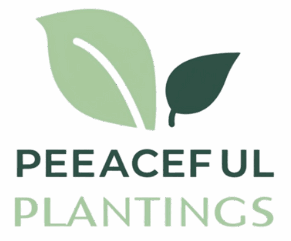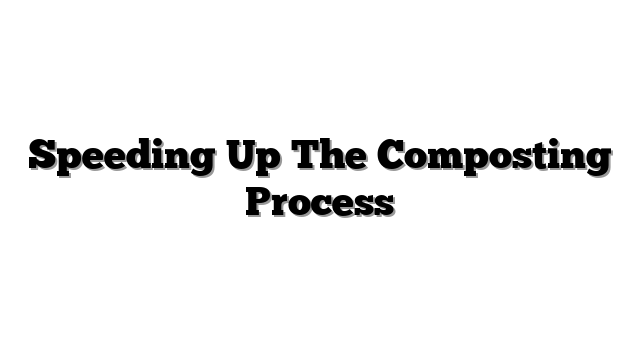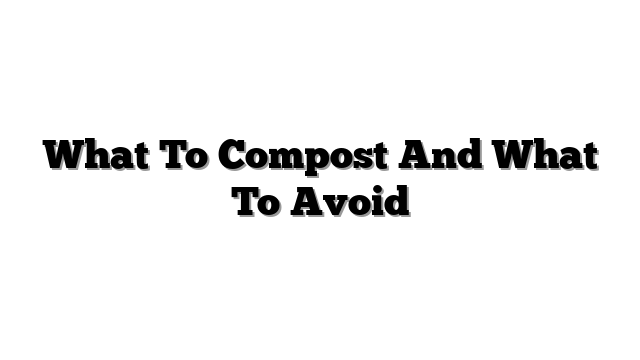Speeding Up The Composting Process
Waiting for good compost takes time. Months pass by. Sometimes even years. You want that dark, rich garden food. But your compost pile sits there. It breaks down slowly. It feels like forever.
Good news. Composting does not have to be slow. You can speed up the process. Understanding a few simple things helps a lot. You get usable compost much faster.
This guide shares the secrets. It shows you how to make compost quickly. We give you steps to follow. This helps gardeners starting out. It helps those with more practice too.
We look at why things break down fast. We pick the right stuff to put in. We make the air, water, and heat perfect. We talk about special ways like hot composting. We fix problems that come up. Get ready for faster compost. Get ready for better soil health.
Compost piles work because tiny living things eat waste. These are microbes. Bacteria and fungi do the work. Slow composting happens with little air. It can smell bad. This is anaerobic. Fast composting uses lots of air. It gets hot. This is aerobic. It works well.
Fast microbes need four main things. They need food. Carbon gives them energy. These are “brown” things. Nitrogen helps them build bodies. These are “green” things. They need water. Water helps them live and move. They need air. Oxygen keeps them working fast.
Getting the right mix of carbon and nitrogen is key. Experts agree this mix matters greatly. Aim for about 25 to 30 parts carbon to 1 part nitrogen. Too much carbon slows things down. It gives only energy. Too much nitrogen can make it smell bad. It lacks structure. Finding the balance speeds things up.
Heat shows microbes are working hard. Fast composting piles get very hot. This is the thermophilic stage. Temperatures reach 131 to 160 degrees Fahrenheit. This heat kills bad germs. It kills weed seeds too. This is a sign of hot composting. It means fast work.
Studies show balancing browns and greens boosts speed. It makes microbes happy. Happy microbes work fast.
Pick the right things for your compost mix. This helps speed things up. “Browns” give carbon. Think dry leaves. Straw works well. Shredded paper or cardboard is good. Wood chips add structure. These are yard waste materials.
“Greens” give nitrogen. These are often fresh. Kitchen scraps fit here. Grass clippings are great. Coffee grounds add nitrogen. Manure from animals like chickens helps a lot. These are green waste.
Mixing browns and greens fuels the process. Aim for more brown stuff than green. About two to three parts brown to one part green is a good rule. This balances the carbon and nitrogen.
Make your materials small. This is a big help. Shred leaves. Chop up veggie scraps. Cut cardboard into pieces. Smaller pieces mean more surface area. Microbes can reach more food faster. This speeds up breaking down greatly.
Some things slow down composting. Avoid meat and dairy. They can smell bad. They attract pests. Oily foods cause problems too. Treated wood has bad chemicals. Diseased plants spread sickness. Do not put these in your pile. You avoid troubleshooting compost later.
Using a mix of different browns and greens is good. It gives microbes a varied diet. This helps them work better.
A garden expert once said, “Your compost is only as good as what you put in it.” Wise words. Choose wisely for speed.
Air, water, and heat control how fast compost works. These are very important.
Air is needed for fast microbes. They need oxygen. Turning your compost pile adds air. Do it often. This is turning the compost. It mixes things up. It brings air deep inside. You can use a special tool. A compost aerator helps poke holes. Building your pile with coarse brown stuff adds air pockets.
Compost tumblers make turning easy. You just spin the drum. This mixes and adds air well. Tumblers help speed up composting for many people. They are good for aeration.
Water is also needed. Compost should feel like a wrung-out sponge. It should be damp. Not soaking wet. Not dusty dry. Too little water slows microbes down. They get thirsty. Too much water pushes out air. The pile gets soggy. It can smell bad. This needs troubleshooting compost.
Add water if the pile feels dry. Use a hose. Mix it in as you turn. Add dry brown materials if it is too wet. This soaks up extra water. Covering the pile helps. It stops rain from making it too wet. It stops the sun from drying it out.
Heat shows the pile is working. A hot pile breaks down fast. The ideal heat for hot composting is 131 to 160 degrees Fahrenheit. A compost thermometer checks the heat. High heat means microbes are very active. It means fast breakdown.
A pile needs enough size to get hot. About three feet tall and wide is good. It needs the right mix of browns and greens. It needs enough moisture and air. All these things work together. They create the perfect environment for speed.
A study showed turning a hot pile every few days works best. It keeps the heat up. It keeps the air flowing.
Want compost really fast? Try special methods. Hot composting is one way. It is a set of composting tips used together.
Hot composting needs planning. Gather all materials at once. Aim for a pile size around 3x3x3 feet. This size holds heat well. Get the brown and green mix right from the start. Make sure it has the right moisture.
The key is turning often. Turn the pile every few days. This adds air. It keeps the heat high. A hot pile can finish in just weeks. This is much faster than waiting months. It takes more work. But you get compost quickly.
Other tips help speed things up. Some people use “activators.” These are things that boost microbe growth. Fresh manure or grass clippings work well. They are high in nitrogen. Adding a little finished compost helps too. It puts good microbes into the new pile.
The type of bin matters. Some compost bin designs help air flow. Wire mesh bins let air move freely. Pallet bins have gaps. These work better than solid bins for speed. Compost tumblers are also good for speed. They make turning easy.
Covering your pile helps keep heat in. It controls moisture. It keeps pests away. A simple tarp works.
Faster compost fits modern gardening. You feed your plants sooner. It helps things like vertical gardening. It helps native plant beds. It provides soil amendment fast.
A recent report highlighted composting’s role. It supports growing food in small spaces. Fast compost makes this easier.
Sometimes compost does not work right. It slows down. Or it smells bad. This is troubleshooting compost.
A bad smell happens sometimes. A rotten egg smell or ammonia smell means something is wrong. The pile is often too wet. Or it does not have enough air. Or it has too much nitrogen (greens). Fix it by turning the pile. Add dry brown materials.
The pile might not get hot. This happens for reasons. Maybe the pile is too small. It is too dry. It does not have enough nitrogen. It lacks air. Make the pile bigger. Add water. Add green materials. Turn it well.
A pile can feel dry and crumbly. It needs more water. Add water slowly. Turn the pile as you add water. Mix it in well.
A pile might be soggy and slimy. This means too much water. Or bad drainage. Or not enough brown stuff. Turn the pile. Add dry brown materials. Check the bottom for water buildup.
How do you know compost is ready? It finishes or “cures.” It looks dark brown. It feels crumbly. It smells like earth. Not like food waste or manure. You cannot see the original materials anymore. The pile cools down. It is the same heat as the air. This is curing compost.
Using finished compost helps your garden. It is a great soil amendment. It makes garden soil better. It helps soil hold water. It gives food to healthy plants. It can even help stop plant sickness. It improves soil health overall.
Knowing when it is ready is simple. Look, feel, and smell. The compost tells you.
Here are some common questions about faster composting.
Q1: How fast can I really make compost?
Answer: You can make finished compost in weeks. This happens with hot composting. It is much faster than just letting a pile sit.
Q2: Do I have to turn my compost pile?
Answer: Yes, turning helps a lot. Regular turning compost adds air. It keeps heat up. It makes things break down much faster.
Q3: My compost is not hot. How can I fix this?
Answer: Check pile size. Check moisture. Check the mix of browns and greens. Check for air. These are common issues needing troubleshooting compost.
Q4: What bin works best for speed?
Answer: Compost tumblers help turning. Bins with good air flow work well. Wire mesh or pallet bins are good compost bin choices for speed.
Q5: What is the best carbon-nitrogen ratio for fast compost?
Answer: Aim for about 25-30 parts carbon to 1 part nitrogen. That is roughly 2-3 parts brown stuff to 1 part green stuff by volume.
Getting compost faster is possible. It needs a few simple steps. Balance ingredients like organic matter. Make sure there is enough water and air. Watch the heat. Turn the pile often. This is turning compost.
This work pays off. You get nutrient-rich soil amendment quickly. Your soil health gets better. You grow healthy plants. You practice sustainable gardening. You help with waste reduction.
Try these composting tips in your garden. See how fast you can make black gold. Explore more ways to use compost. Find tips for caring for your plants. Learn about other gardening ideas.






